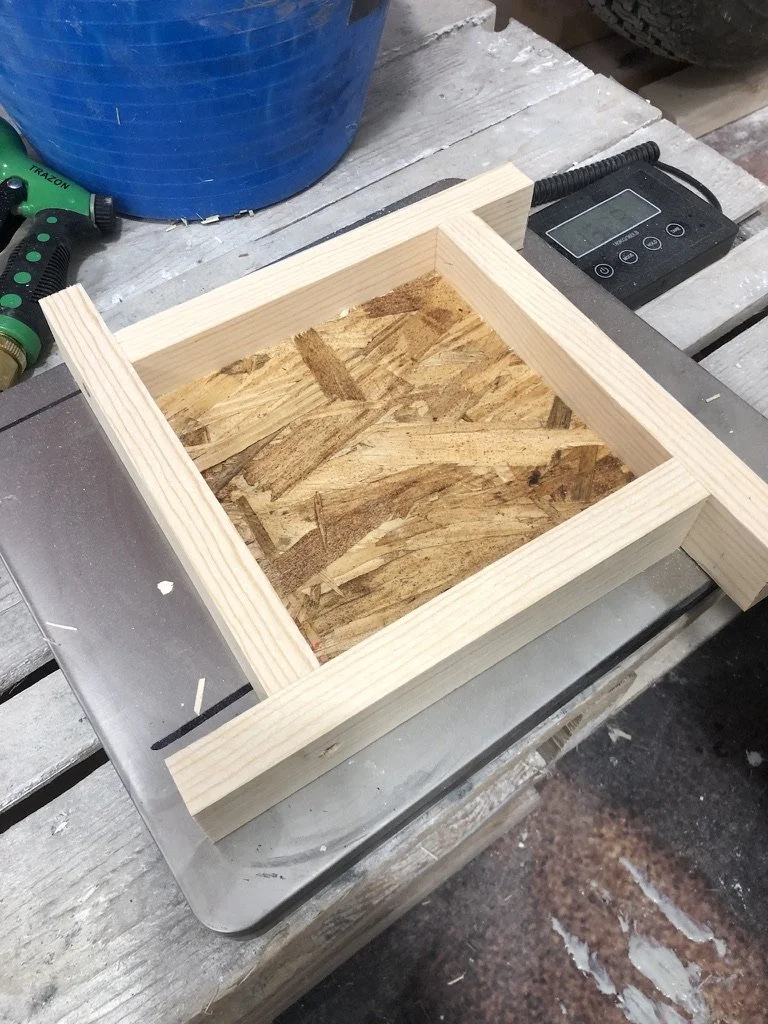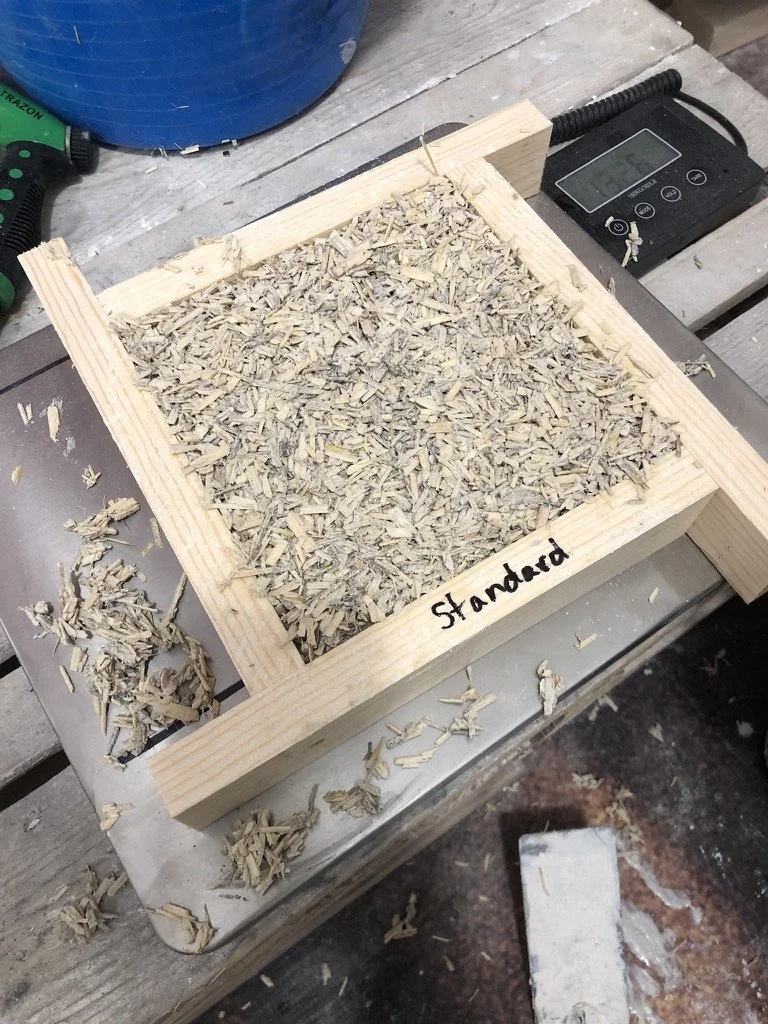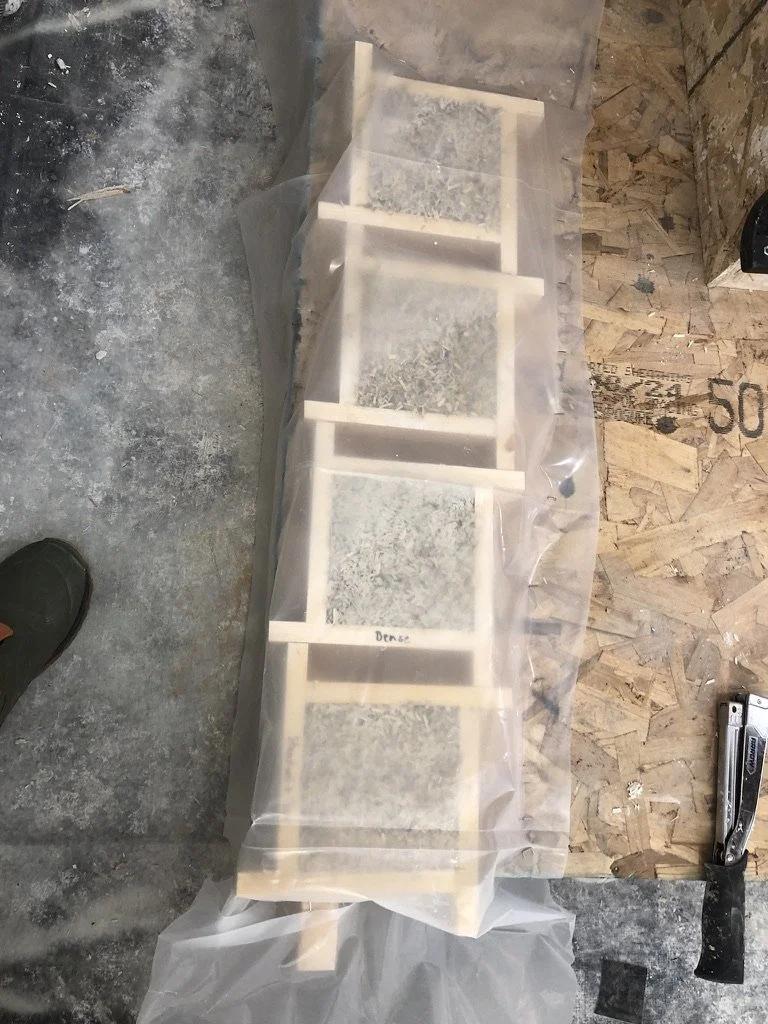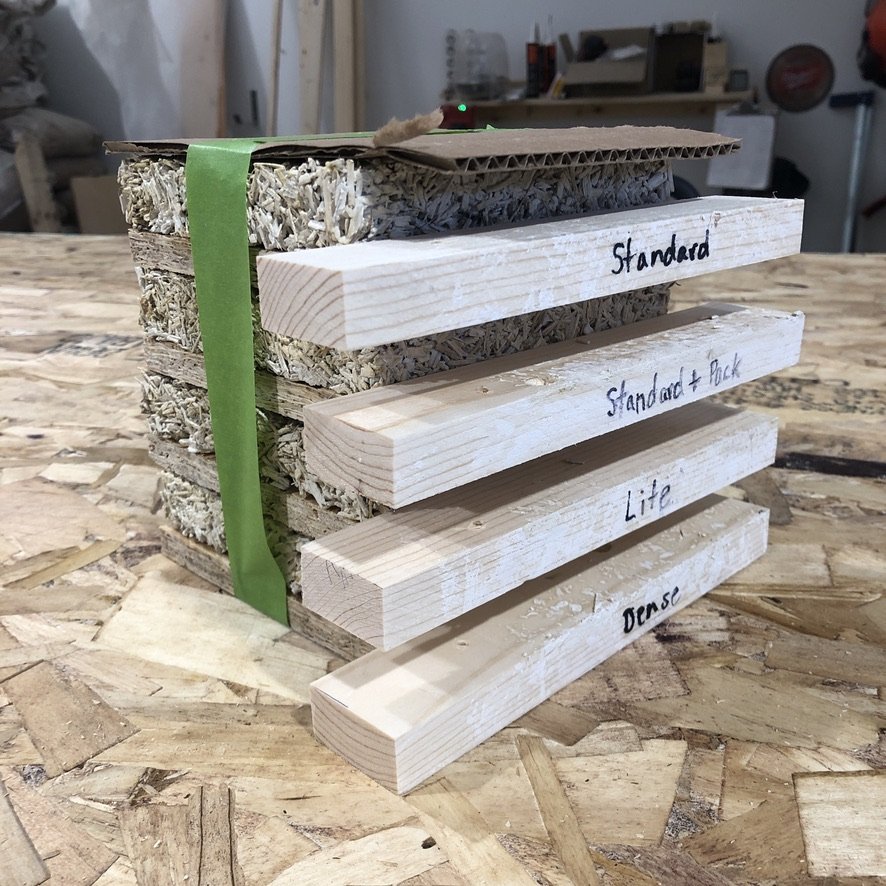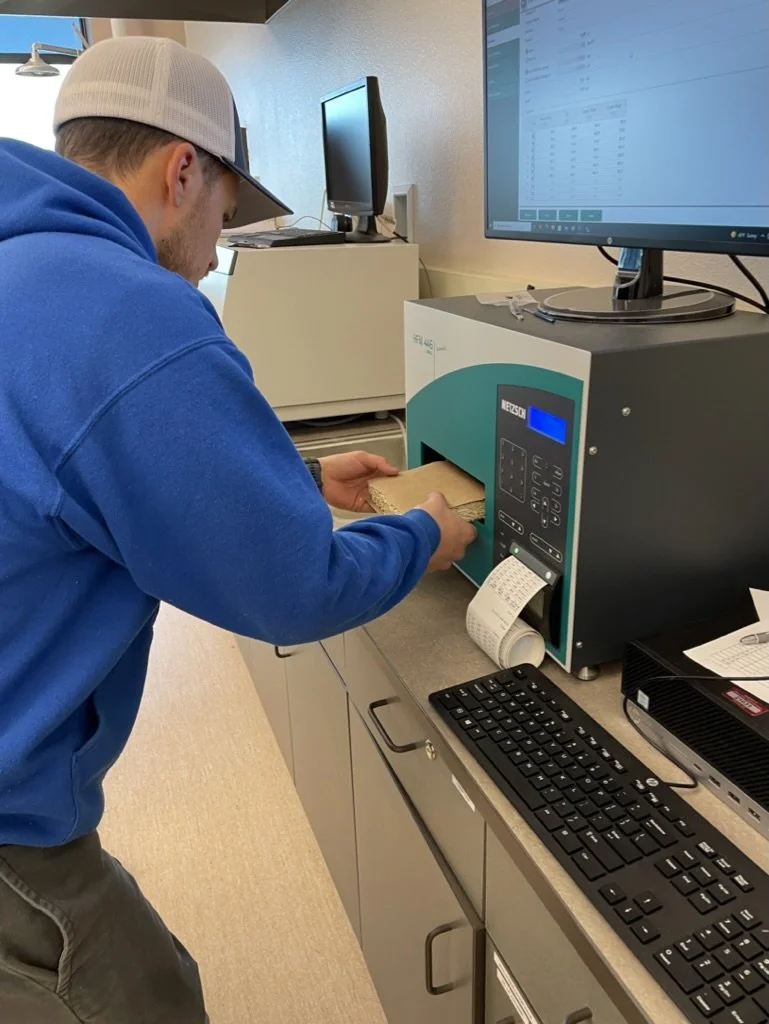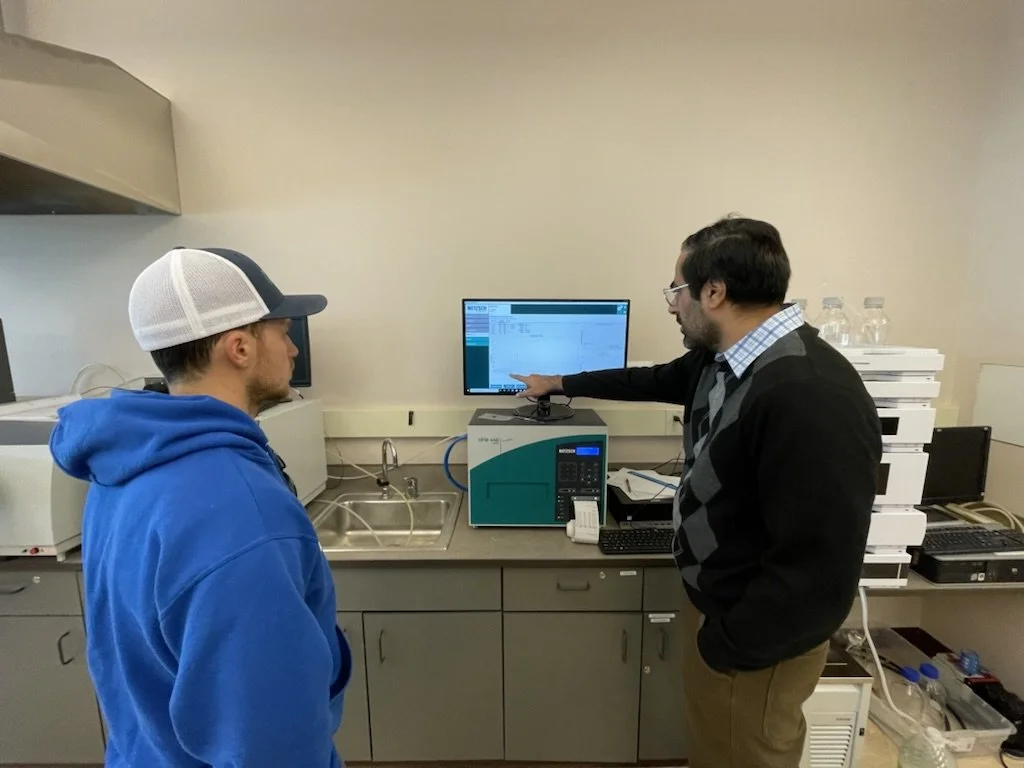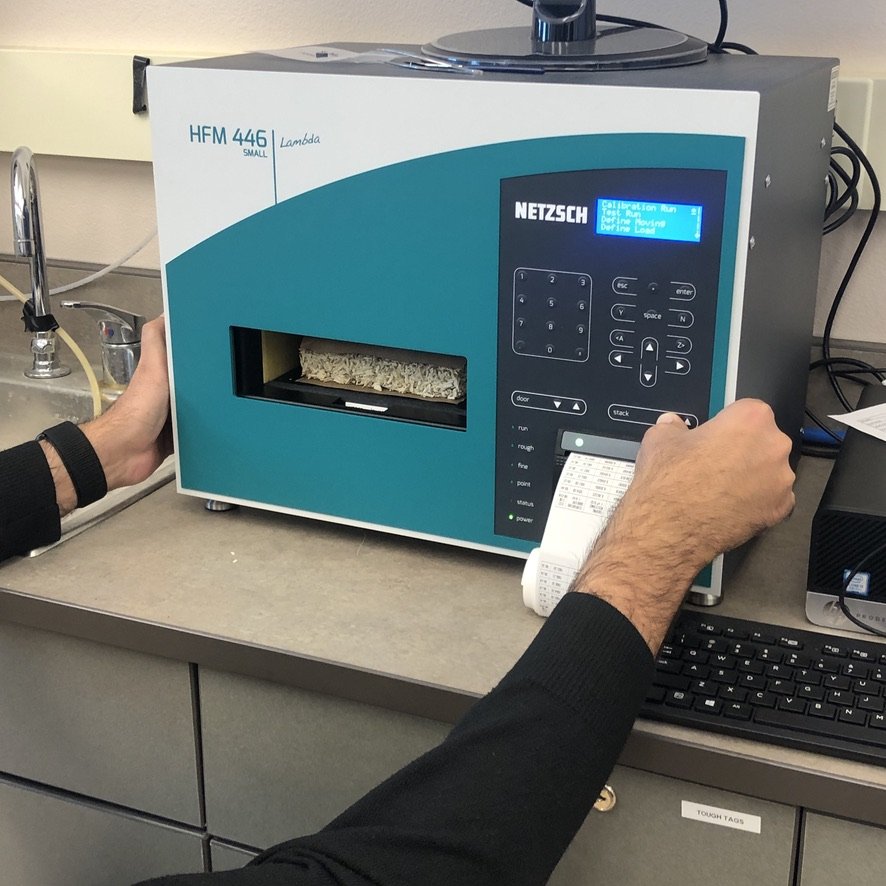Hempcrete: Testing for R-Value
At the end of 2022 we partnered with United Tribes Technical College (UTTC) in Bismarck, ND to conduct thermal conductivity testing on some hempcrete samples.
One of the main reasons we decided to get hempcrete tested was to make it easier to work with permitting officials. In order to obtain a permit to build a home the permitting departments have standards you have to meet on a local level, one of those standards being a minimum r-value (this minimum varies by region, in our case the minimum r-value for walls is r-20). To be fair, getting tests done like this is not always required, and many builds have been done in the US without needing them, but it definitely helps streamline the process and add legitimacy to a proposal.
The most widely known and accepted test to figure out a material's r-value is called the “hot-plate test”. Basically the sample material gets sandwiched between two plates, heat is applied from one of the plates, then the transfer of heat through the sample material is monitored to see how conductive it is. From this data we can calculate the r-value.
The first step for this test was to make samples. We made samples in our facility ahead of time to allow them time to cure. We ended up making 4 samples in total, each one being 1 inch thick, by 6 inches squared. They were exactly 1 inch thick because that is what is required in the hot plate machine. It measures 1 inch at a time, then those results are extrapolated to whatever thickness your wall is going to be. For instance, if I have an insulation that is R-4 per inch, and I have a 5.5 inch thick insulation bay in the wall then my expected r-value will be R-22. The 4 samples we produced were made with various mix ratios (heavy and light on binder), as well as density (how hard the samples were packed/tamped). We wanted to see most importantly what the r-value of our standard mix was, but also how much variables like mix ratio and packing density actually affect the end product. After samples were made, we let them all cure for 2 weeks prior to bringing them to the testing lab.
The lab at UTTC the machine we utilized for this test was the Netzsch HFM 446, which is specifically designed to perform the hot-plate test. We set up the machine to test the thermal conductivity at a range of different temperatures so that we could conclude a reasonable average r-value. Once parameters were set all that was left was to run the samples through the machine. Each sample took about 2.5hrs to run through a full cycle. After samples were complete the program provided a downloadable summary of the results. The primary measurement we were after was the thermal conductivity, measured as “W/(m⋅K)”.
The results turned out very close to what we expected. We have read studies from other countries that the thermal conductivity of hempcrete usually floats around 0.06-0.07 W/(m⋅K). With our standard mix samples the range was 0.06695 to 0.07716, the standard mix/standard compression being on the lower end, and the standard mix/dense pack sample being on that higher end. What was surprising about this range is that while the amount of compression does affect the thermal conductivity of the material, its affect is actually much less than most people think. The reason for this may due to the fact that most of the air gaps within a hempcrete wall actually come from the air gaps within your hurd itself, rather than from the gaps left while packing.
So, we got our results and we figured out the thermal conductivity of hempcrete, but what about the r-value? Thermal conductivity is just one piece of the calculation, and it is a constant regardless of material thickness. The other piece of the equation is the material’s thickness. Since we made all of the samples the exact same, at 1”, that made the calculation a bit easier and gives us a nice clean number for r-value per inch. In order to further simplify and “Americanize” our math we converted the thermal conductivity measurement of W/(m⋅K) to the American equivalent Btu•in/h•ft2. With this number we can use our 1” measurement to calculate rvalue. The math goes, number of inches your material is (in inches) / your Btu•in/h•ft2. Ours looked like this: 1 / 4.85343 = 2.05 rvalue. This was for our standard mix/standard compression. For contrast our standard mix/densely packed sample came back at 1.95 rvalue. So while it is lower, we were surprised to see that packing the material really tight did not have as much of an impact as we would have guessed. To be fair though, this was for a 1” sample, there is a limit to the amount of compression you can put into a 1” sample vs a 12” thick wall. The best way to get truly accurate numbers would be to test our insulation materials at the thickness that they will be applied.
So in conclusion, our results are listed below
Standard mix ratio/standard compaction: Hempcrete Rvalue 2.05 per inch
Standard mix ratio/dense compaction: Hempcrete Rvalue 1.95 per inch
High binder ration/standard compaction: Hempcrete Rvalue 1.67 per inch


